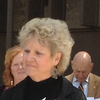Last June, I wrote a blog entitled, "NOW Is the Time for Rising Seniors to Find and Choose Colleges They're Going to Love." While June is fine, right now is an even better time for juniors to organize a college list. If you come up with a list in February, followed by some careful research, you and your family can take advantage of Spring Break and early summer to visit colleges that are good matches for you.
Most students have no idea about how to develop a college list, let alone one that really fits them academically and personally, so here are seven steps to follow that will help you know exactly what to do.
Seven Steps To Putting Together A Great College List
- Figure out what you want in a college. One way of doing that is to fill out the College Selection Questionnaire, available at no charge on my website.
After you identify some things you want, go to online college search programs and enter that information, as well as your GPA and test scores. A couple of good search sites are College Board's big future College Search and CollegeMapper. These programs generate a list of colleges based on the information you provide them. Show the list of colleges to your parents, high school counselor, favorite teachers and trusted friends to get their feedback and suggestions. Once you have a preliminary list of colleges, 10-20 or so, research the colleges to see if they match you and your needs. You can do that with books such as The Fiske Guide, Colleges That Change Lives and on websites such as collegeprowler and unigo.com. Low-income students should take a look at the Center for Student Opportunity website. And don't forget to check out each college's own website. Once on a college website, be sure to go to their financial calculator to see if you will be able to afford the school. Some other financial resources are www.fastweb.com and the College EFC Calculator on College Board's big future. As you go through the different resources, write down what you like and don't like about each school. Depending on your family financial resources, visit as many colleges on your list as you can. At the end of junior year, based on everything you read, hear, see and do, narrow down your list to 8-10-12 schools. With the help of your college counselor and/or the school's Naviance system, put the colleges into Reach, Good Chance and Pretty Sure Thing categories. To help you do that, go to my website for the Private and Public Colleges List which offers a) college SAT/ACT Test Scores of last year's successful applicants, b) number of students, c) college acceptance rates and d) whether a school accepts the Common Application.
SAMPLE COLLEGE LISTS
So that you have a sense about what some college lists looks like, here are three examples. After each college name is the 25th-75th percentile test score range of previously successful students for both SAT (the Critical Reading and Math combined scores) and composite ACT scores.
Tom (Learning disabled student from Texas)
• SAT I combined score of 950 (Critical Reading and Math) • GPA of 2.8 • No AP courses • Active in sports.
COLLEGE LIST
REACHES
Texas Christian University, TX
(SAT 1110-1300/ ACT 24-29)
Birmingham-Southern College, AL
(SAT 1070-1300/ ACT 23-29)
GOOD CHANCES
University of Arizona, AZ
(SAT 970-1220/ ACT 20-27)
University of Texas, Tyler, TX
(SAT 960-1160/ ACT 20-25)
Northern Arizona University, AZ
(SAT 950-1180/ ACT 20-26)
PRETTY SURE THINGS
Midwestern State University, TX
(SAT 930-1135/ ACT 19-15)
University of Northern Colorado, CO
(SAT 910-1140/ACT 19-25)
Tom decided to attend the University of Arizona and make use of their renowned SALT learning services program.
Jasmine (Student from Washington, DC)
• SAT I combined score of 1200 • GPA of 3.5 • 3 AP courses • Very active as a dancer.
COLLEGE LIST
REACHES
Connecticut College, CN
(SAT 1250-1410/ ACT 28-32)
University of Maryland, MD
(SAT 1190-1400/ ACT 26-31)
GOOD CHANCES
Skidmore College, NY
(SAT 1150-1350/ACT 25-30)
Fordham University, NY
(SAT 1150-1340/ ACT 25-30)
University of Connecticut, Hartt School, CN
(SAT 1130-1310/ ACT 25-29)
PRETTY SURE THINGS
Indiana University, Bloomington, IN
(SAT 1050-1280/ ACT 22-29)
Howard University, DC
(SAT 970-1160/ ACT 20-25)
Goucher College, MD
(Test optional)
Jasmine took a look at all the wonderful dance programs at the above schools and decided to attend Skidmore College where she received a very nice scholarship.
Dakota (Student from California)
• SAT I combined score of 1480 • GPA of 4.2 • 5 AP classes • Editor of school newspaper • Interested in Writing/Journalism.
COLLEGE LIST
SUPER-REACHES
Princeton University, NJ
(SAT 1410-1590/ ACT 31-35)
Stanford University, CA
(SAT 1360-1550/ ACT 31-34)
REACHES
Duke University, NC
(SAT 1350-1530/ ACT 30-34)
Emory University, GA
(SAT 1280-1470/ ACT 29-33)
Oberlin College, OH
(SAT 1280-1460/ ACT 29-33)
GOOD CHANCES
University of Michigan, MI
(SAT 1260-1430/ ACT 28-32)
UC Berkeley, CA
(SAT 1250-1490/ ACT 28-33)
Kenyon College, OH
(SAT 1250-1430/ ACT 28-32)
PRETTY SURE THINGS
Lewis & Clark College, OR
(SAT 1190-1380/ ACT 26-31)
UC Santa Cruz, CA
(SAT 1020-1270/ ACT 22-28)
Dakota decided to attend Oberlin College after checking out the various creative writing programs at the schools.
The SAT/ACT scores above and acceptance rates are taken from the US News & World Report and College Navigator.
Support HuffPost
Our 2024 Coverage Needs You
Your Loyalty Means The World To Us
At HuffPost, we believe that everyone needs high-quality journalism, but we understand that not everyone can afford to pay for expensive news subscriptions. That is why we are committed to providing deeply reported, carefully fact-checked news that is freely accessible to everyone.
Whether you come to HuffPost for updates on the 2024 presidential race, hard-hitting investigations into critical issues facing our country today, or trending stories that make you laugh, we appreciate you. The truth is, news costs money to produce, and we are proud that we have never put our stories behind an expensive paywall.
Would you join us to help keep our stories free for all? Your contribution of as little as $2 will go a long way.
Can't afford to donate? Support HuffPost by creating a free account and log in while you read.
As Americans head to the polls in 2024, the very future of our country is at stake. At HuffPost, we believe that a free press is critical to creating well-informed voters. That's why our journalism is free for everyone, even though other newsrooms retreat behind expensive paywalls.
Our journalists will continue to cover the twists and turns during this historic presidential election. With your help, we'll bring you hard-hitting investigations, well-researched analysis and timely takes you can't find elsewhere. Reporting in this current political climate is a responsibility we do not take lightly, and we thank you for your support.
Contribute as little as $2 to keep our news free for all.
Can't afford to donate? Support HuffPost by creating a free account and log in while you read.
Dear HuffPost Reader
Thank you for your past contribution to HuffPost. We are sincerely grateful for readers like you who help us ensure that we can keep our journalism free for everyone.
The stakes are high this year, and our 2024 coverage could use continued support. Would you consider becoming a regular HuffPost contributor?
Dear HuffPost Reader
Thank you for your past contribution to HuffPost. We are sincerely grateful for readers like you who help us ensure that we can keep our journalism free for everyone.
The stakes are high this year, and our 2024 coverage could use continued support. If circumstances have changed since you last contributed, we hope you’ll consider contributing to HuffPost once more.
Already contributed? Log in to hide these messages.

